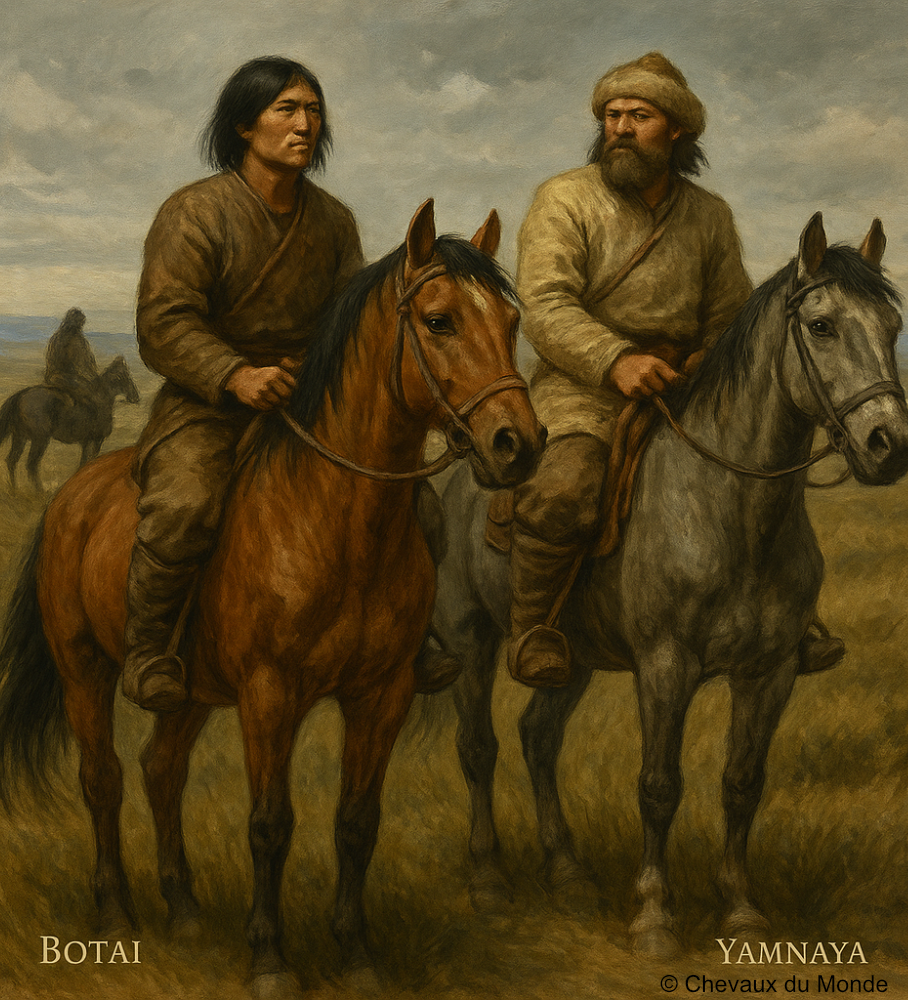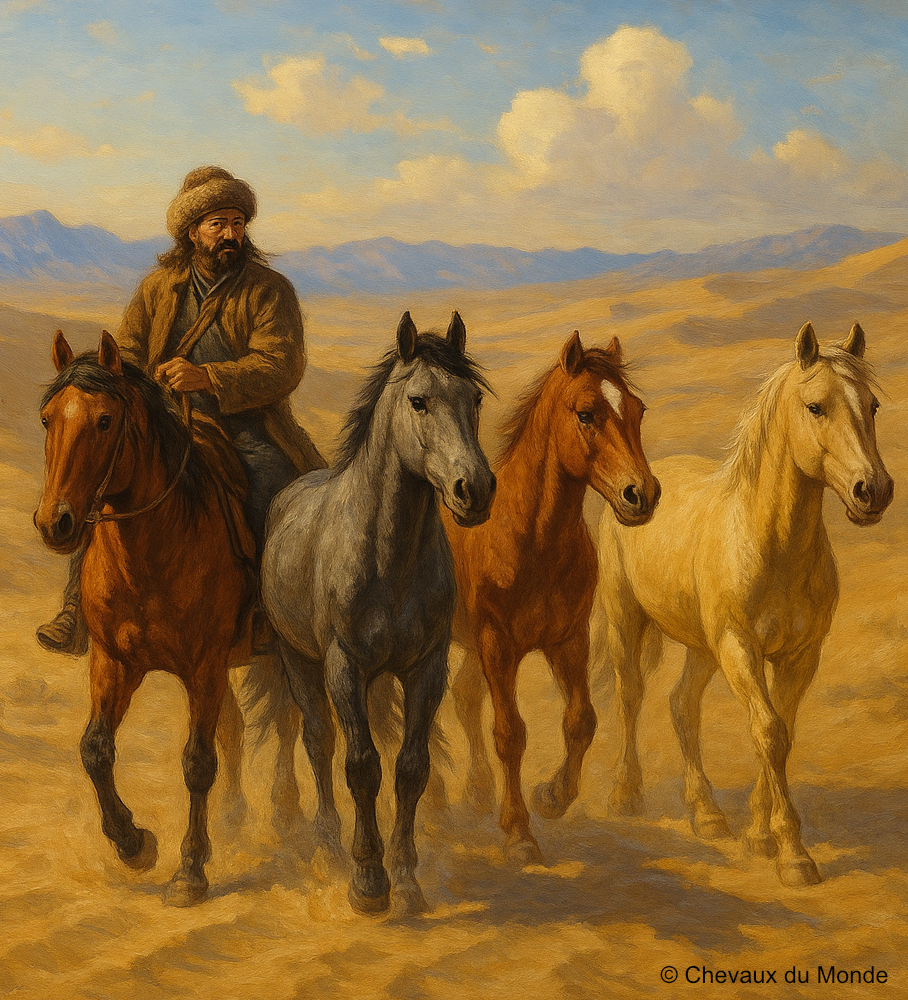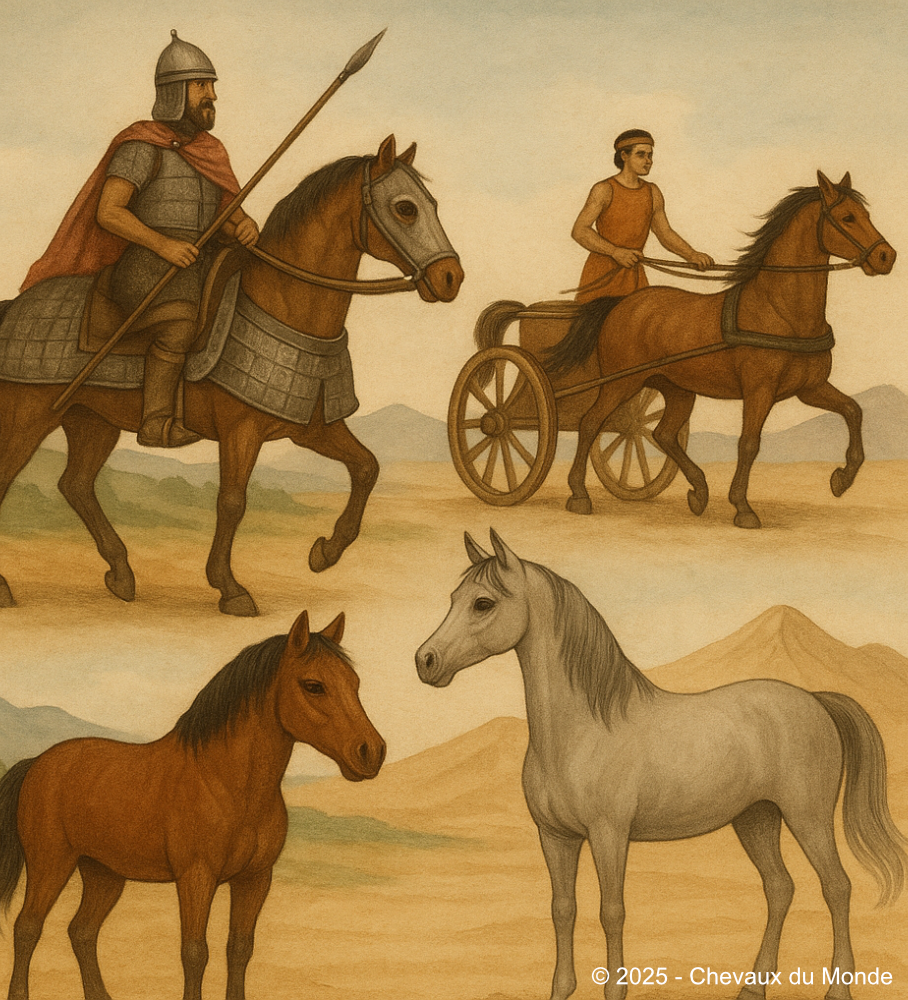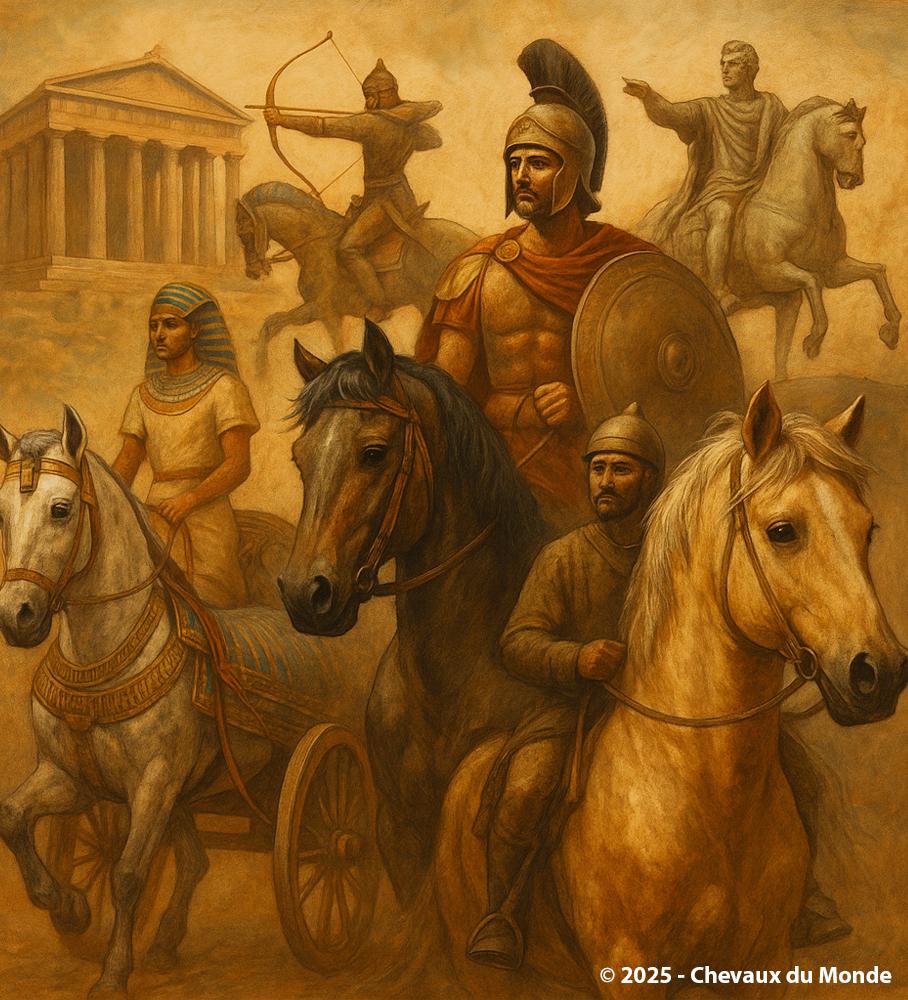HORSES AND SAMURAI: FROM THE BATTLEFIELD TO MARTIAL ARTS
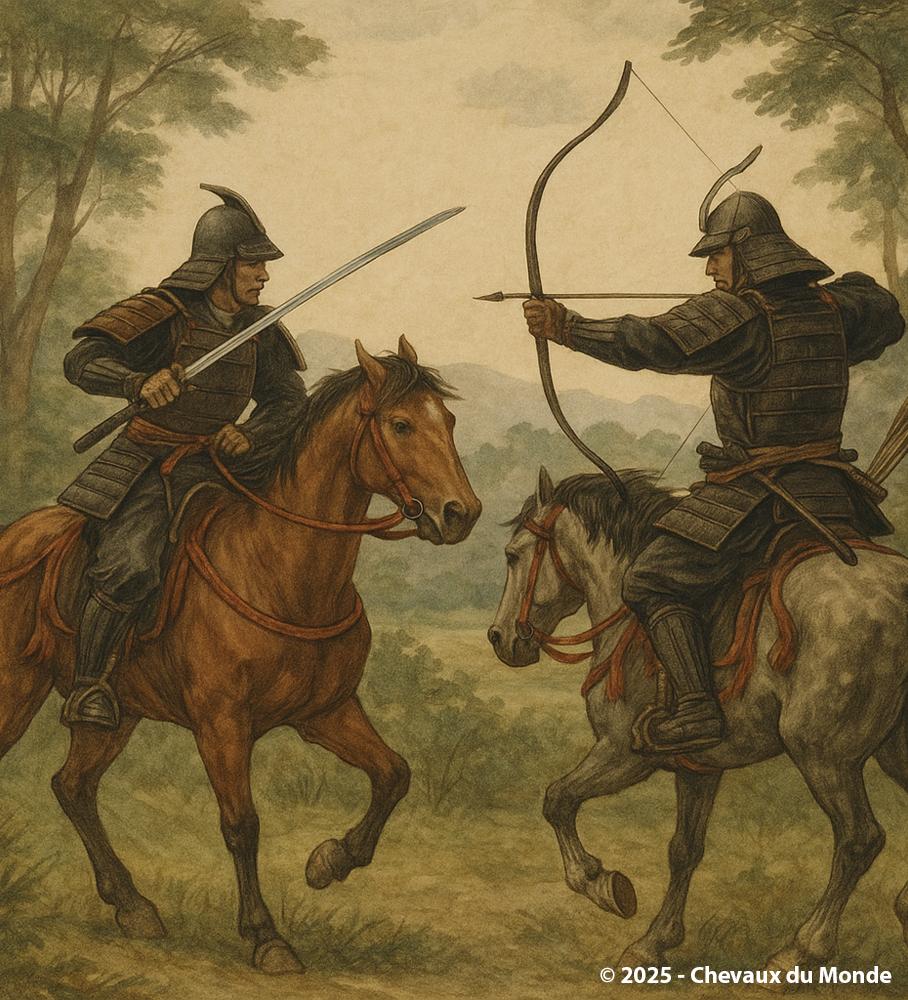
Masters of blade and saddle: samurai developed a unique martial horsemanship, blending military tactics with refined warrior art.
Horses played a central role in the military and cultural history of feudal Japan. Companions of the samurai, they were not only war mounts but also symbols of prestige and essential actors in the development of martial arts. This article provides a detailed overview of their role, from medieval warfare to their influence on Japanese culture.
The Horse in Feudal Japan
A Late but Decisive Introduction
- The horse was introduced to Japan between the 4th and 5th centuries, most likely from Korea and China.
- It quickly became a key element of the warrior clans.
- The first samurai (bushi) were primarily mounted archers, developing a discipline called kyuba no michi (“the way of the bow and the horse”).
The Horse as a Symbol of Prestige
- Only high-ranking warriors could own a horse, since its upkeep was costly.
- The animal represented authority, military power, and nobility.
- In Shinto rituals, offering a horse (real or symbolic in the form of a wooden plaque called ema) to shrines was an important act of devotion.
Horses and the Art of War
Samurai Equestrian Tactics
- Early conflicts, such as the wars against the Emishi in northern Japan, highlighted the superiority of mounted archers.
- The practice of yabusame (horseback archery), still performed today in ceremonies, descends directly from this tradition.
- Unlike Europe, mass cavalry charges were rare: the samurai used the horse more as a mobile platform for archery.
Evolution During Civil Wars
- During the era of civil wars (Sengoku, 15th–16th centuries), battles increasingly involved large infantry armies (ashigaru), reducing the dominant role of cavalry.
- However, horses remained essential for commanders’ mobility and for individual duels.
The Horse and Martial Arts
Yabusame: A Sacred Art
- Developed by the Minamoto clan in the 12th century, yabusame combines spiritual discipline and martial technique.
- The rider must strike multiple targets while galloping at full speed, demonstrating mastery of concentration and breath control.
- This art, supported by the shogunate and linked to Shinto, was considered a prayer for prosperity and peace.
Other Equestrian Disciplines
- Kurabeuma, horse races practiced since the Nara period (8th century), were forerunners of modern races.
- Kiba-dachi (simulated mounted combat) was also practiced as training for warriors.
Japanese Horses and Traditional Breeds
Indigenous Breeds
- Japan had several local pony breeds adapted to mountainous terrain: the Kiso, the Misaki, and the Noma.
- These small but sturdy horses were perfectly suited to Japan’s rugged landscapes.
- Their modest size contrasted with European warhorses, but they were agile and enduring.
Decline and Preservation
- Starting in the Meiji era (19th century), the army attempted to cross local breeds with larger Western horses, leading to the progressive disappearance of traditional types.
- Today, associations strive to preserve these living heritages, such as the Kiso-uma.
Heritage and Cultural Symbolism
The Horse in Spirituality
- In Shinto, the horse was seen as a messenger of the gods.
- Shrines sometimes kept sacred horses (shinme) entrusted with carrying human prayers to the divine.
The Horse in Art and Culture
- Emaki (medieval picture scrolls) often depicted samurai on horseback.
- Yabusame is still performed at festivals, attracting audiences from around the world.
- In modern culture, the horse continues to embody both the honor of the warriors and the harmony between man and nature.
Conclusion
The connection between horses and samurai goes far beyond the battlefield. From mounted martial arts to Shinto spirituality, the horse helped shape the warrior and cultural identity of feudal Japan. Today, through the practice of yabusame and the preservation of local breeds, this legacy endures, reminding us that the horse was the indispensable ally of the bushi, symbol of loyalty and discipline.

